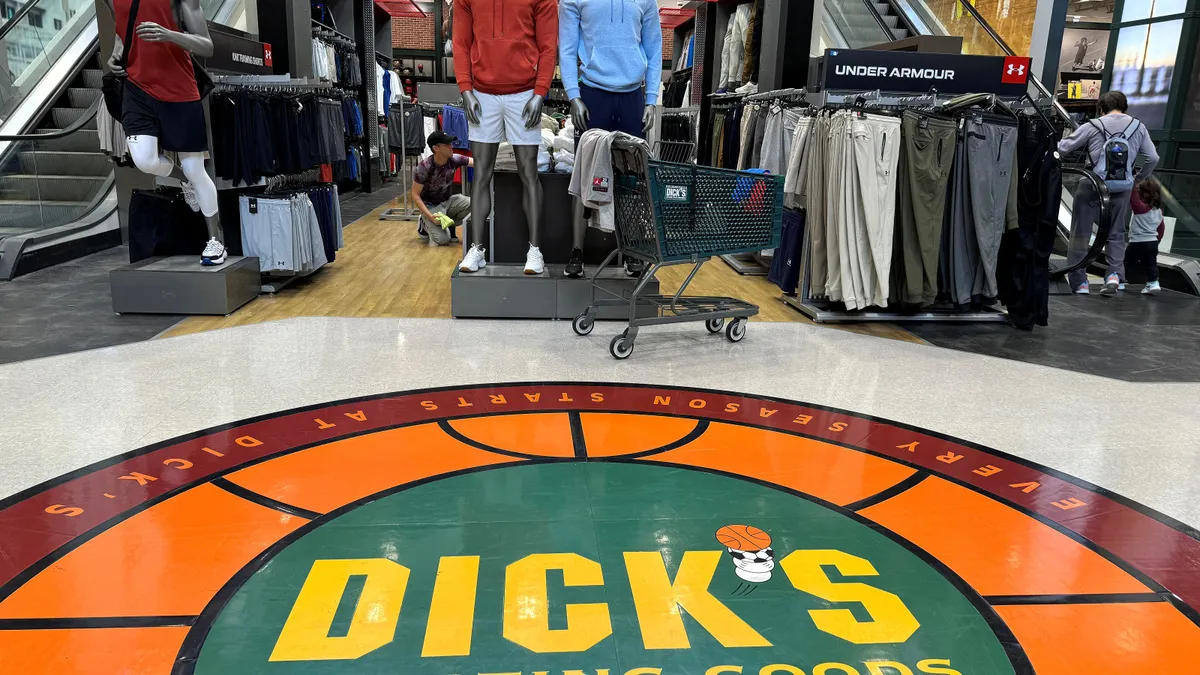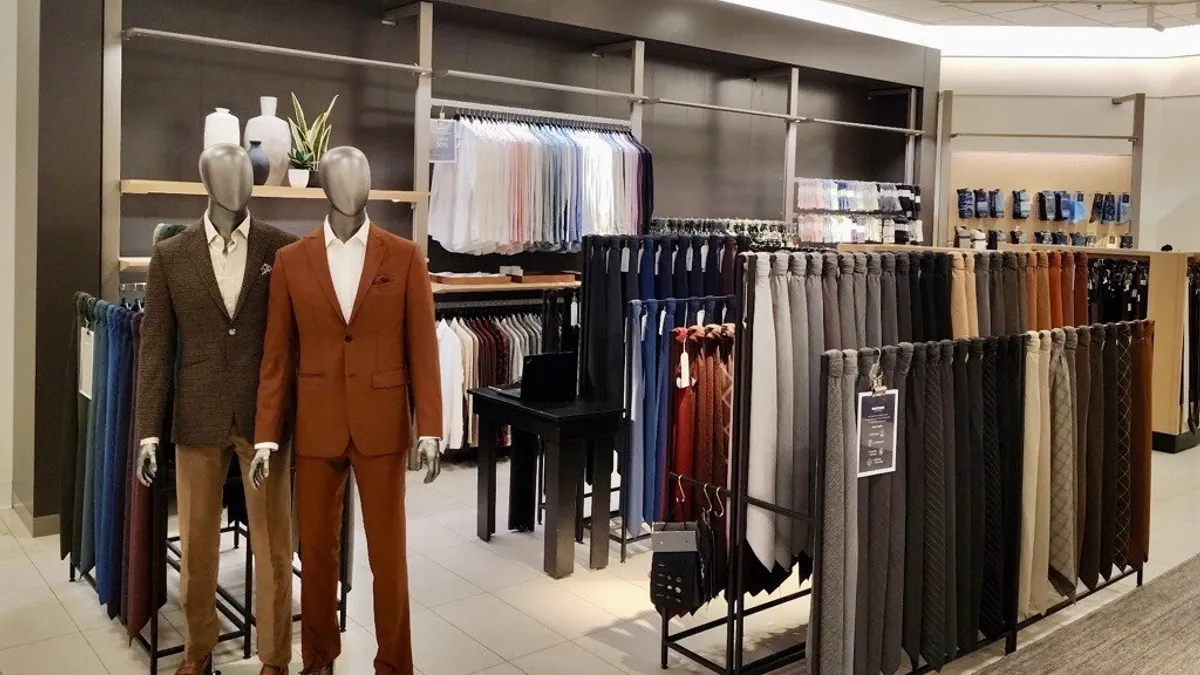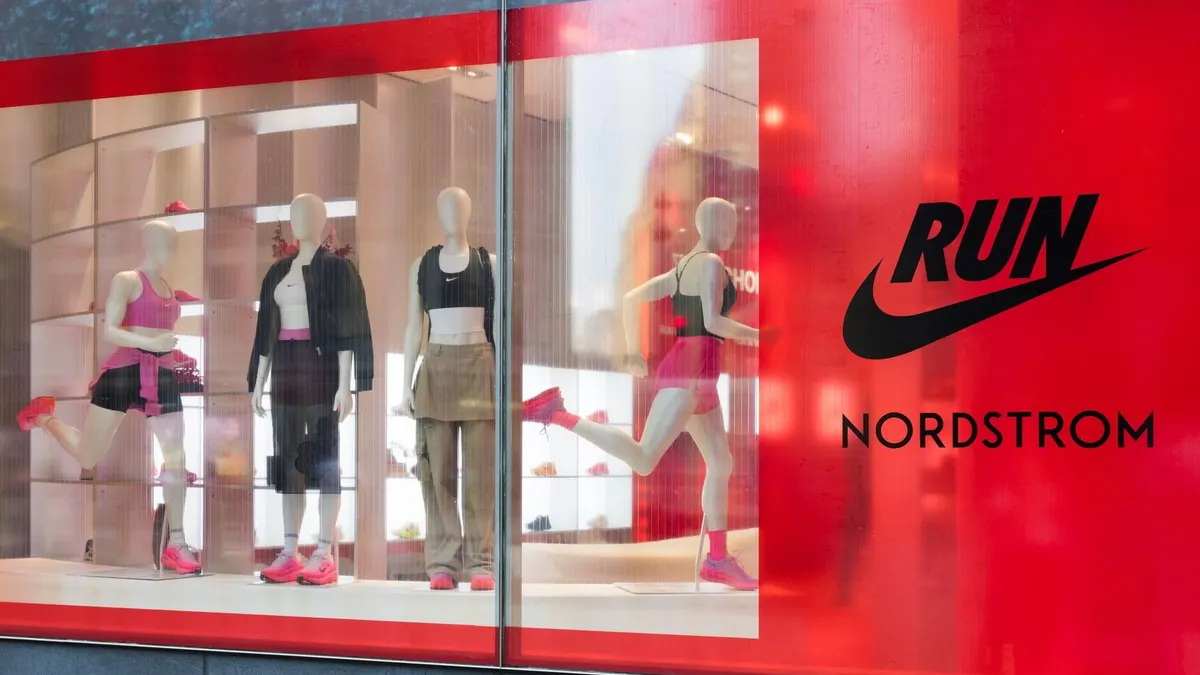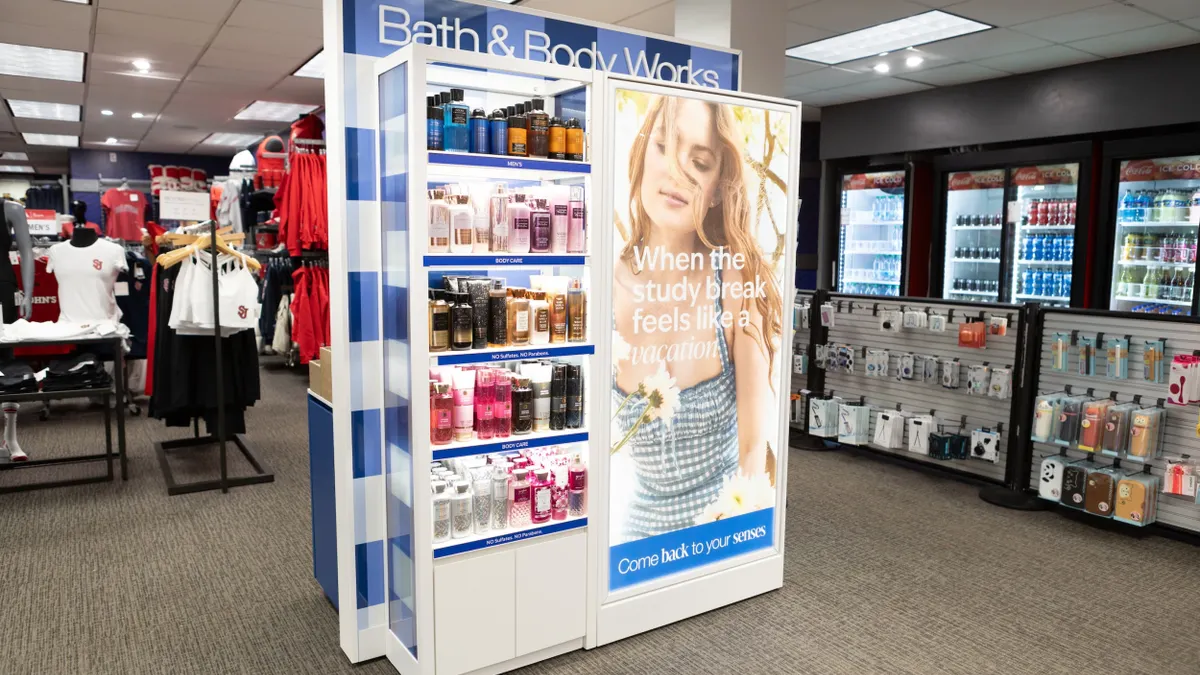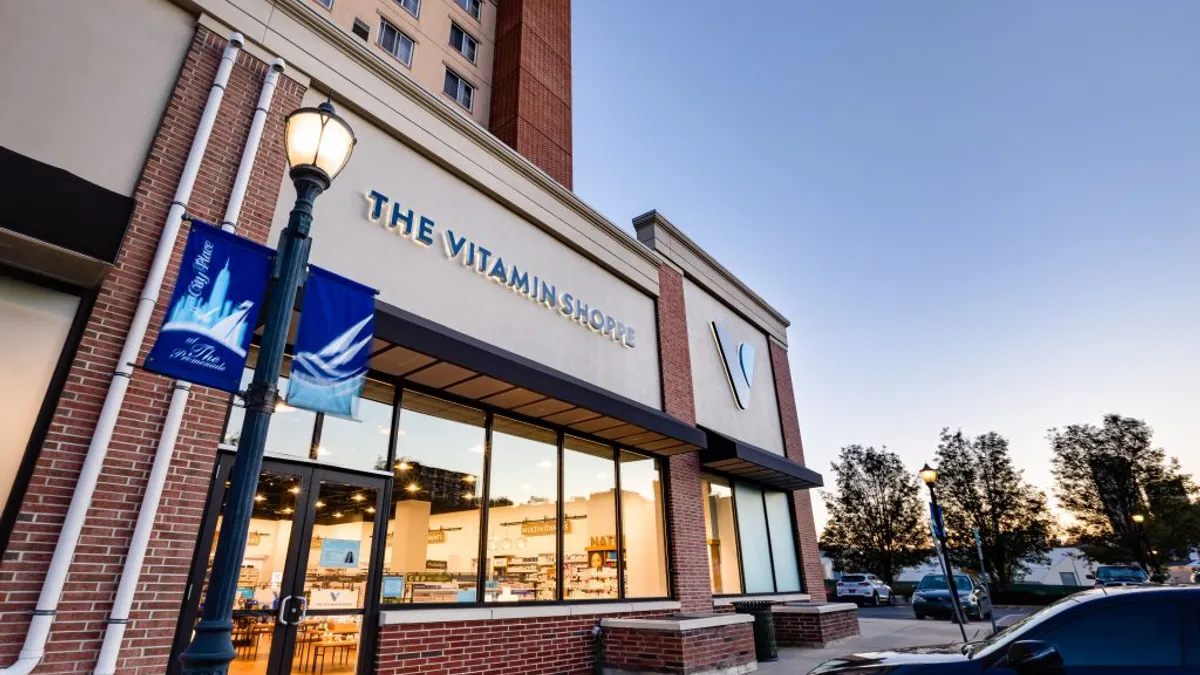Retailers who are ascendant or in descent eat up much of our collective attention. There are also plenty of merchants muddling along somewhere in between, doing reasonably better or less bad than average.
And then there are those most of us hardly think about. Perhaps we take them for granted, remembering them only during the holiday season, when it’s time to buy the kind of thing nobody would think to buy themselves in the normal course of life. Maybe we assume, justifiably or not, that the name is already gone, long ago subsumed by Amazon or the mass merchants.
But they're still here, either because they adapted or the model is durable. Or they fill a geographic or demographic niche and their brand — built over decades — still holds currency. Or maybe they just sell cool stuff you can't find anywhere else.
"I do think in the rush of what’s happening with online, there are these really interesting niches and places where retailers can still thrive," Michael Dart, a partner in A.T. Kearney’s private equity practice and author of the upcoming book Retail’s Seismic Shift, told Retail Dive in an interview. "The thing that’s challenging is they’re more constrained and, I would say, the lens aperture has tightened around the value proposition any one brand or retailer can offer. But if you do a good job within that, you can have a sustainable healthy business."
The names of these retailers can also be key to their survival. "Brand has value, it has recognition," Nick Egelanian, president of retail real estate consulting firm SiteWorks, said in an interview. "Starting a brand like Starbucks or Under Armour is a long-term proposition."
Here are just a few retailers that are still knocking around out there, doing what they do, amid the so-called retail apocalypse. Whether in good health or slightly less so, in each case these brands have something to teach other retailers, both new and established, about sticking around. They are retailers who might be forgotten by the press, analysts and even by many — though not all — customers.
They’re not gone. Not yet, anyway.
1. FYE
Tower toppled. Borders went bust. Hastings is history. Circuit City short circuited. Virgin vanished.
Just about everyone else in the entertainment category was rolled up into FYE, aka For Your Entertainment.
The retail shakeout has been especially brutal on entertainment retailers. Their demise was largely delivered by a cocktail that was one part Netflix, one part Amazon, one part Apple, and one part Walmart and Best Buy. FYE, with nearly 285 stores remaining, is one of the last remaining specialty chains of any size focusing on videos, music and other entertainment.
Video and music still account for roughly half of the company’s sales. That share has fallen recently, and for obvious reasons. Physical video retail sales are down 11% across the industry and music album sales are down 16%, according to FYE’s parent, Trans World Entertainment, which cited outside this industry data in its 2016 10-K.
To counter that trend, the company is expanding its product mix beyond media into areas such as lifestyle products. Sales of non-media products grew 43% last year. In 2016 the company also spent $75 million to acquire etailz, a firm that provides services to retail sellers on Amazon Marketplace and other e-commerce marketplaces.
In the meantime, the stores are doing — not wonderfully. Net sales fell 7.8% in 2016, to $308.4 million, compared to the previous year and — more problematically — a 3.6% decline in comparable store sales. Much of that drop resulted from the retailer jettisoning about 5% of its store fleet. While that’s bad, others in the retail world are doing plenty worse. (For instance, Sears’ comparable store sales fell 7.4% last year and comps at Gap Inc.’s Banana Republic fell 7%.)
Egelanian compared the market for DVDs and CDs to that of books, noting that often after market disruptions (i.e., Amazon, Netflix, etc.), there comes a stabilization point. "Barnes & Noble is still in business even though books are available in other media," he said, adding that a percentage of people still buy in non-digital mediums and "suppliers are always trying to maximize what they can get out of a piece of artistic work." Still, he pointed out that the desire for physical books, for example, is likely stronger than the media FYE specializes in. "There’s not a whole lot of connection to the CD," he said.
For its part, the company is grappling with changing tastes and mediums for consuming entertainment. Trans World CEO Michael Feurer said on an August conference call that his company was trying to improve the shopping experience by "upgrading our digital foundation to provide our customers with a frictionless shopping experience, collaborating with entertainment partners to offer our customers experience with a sense of community, investing in technology and talent to drive sales using smart data and predictive analytics, and immersing into the vibrant digital marketplace," according to a Seeking Alpha transcript.
Whether that will translate into any kind of longevity is uncertain, but FYE is still kicking.
2. Party City
Party City is the $2 billion-plus retailer few people think about until it’s time to host a gathering. The company makes almost as much in revenue as outdoor apparel retailer REI, but it gets just a tiny fraction of the attention. (Compare Party City’s 20,000 hits on Google News to the more than 1 million for REI.) "They’re totally taken for granted," Sean Maharaj, a director consulting firm AArete’s retail practice, told Retail Dive. "We never think about it until Halloween."
But the party supply store model has proven resilient so far through a period of upending for the retail industry as a whole. It’s managed to hold on to roughly a fifth of the $10 billion retail party goods industry even as it faces competition from mass merchants, dollar stores, craft stores like Michaels and Hobby Lobby, other party stores and — of course — Amazon and other e-tailers. Since 2012, the company’s revenue has grown about 4.5% a year, to $2.3 billion in 2016. It’s net income has increased by nearly $100 million, or 33.4%, in that time, to $390 million in 2016. It’s also added more than 55 stores since 2014, making for 750 company-owned stores in 2016. (Including franchises, there’s well over 900 Party City stores.)
It helps that the company makes the bulk of its own products. With its own labels, Party City enjoys higher margins, control and can sell its fare at cutthroat prices. It also has a robust wholesale business, selling to 40,000 retail outlets around the world — including to its retail competitors. Given that third-party wholesale sales make up $625 million in revenue for Party City, there’s a decent chance that even when a competitor beats them to a sale, Party City still made money off it.
Maharaj also points out that the retailer’s stores are simple and easy to navigate and prices on items often beat those of Amazon. "How does an Amazon even think about competing with something like Party City?" he said. "They’re not going to. It’s a very nice niche that keeps any credible competitor off their turf."
3. The Buckle
You could be forgiven for thinking that The Buckle, being a mall-based specialty retailer of teen apparel, might already have gone to that big bargain bin in the sky. After all, 2017 is littered with teetering, bankrupt and liquidated mall-based apparel sellers. But The Buckle is still around and in fact doing about as well as can be expected these days. The retailer, originally founded in 1948 in Nebraska as a men’s clothing store, became a chain of denim stores in the 1970s. That decade also saw the retailer open its first mall location and begin selling to young women in addition to men.
In 1991, the company renamed itself The Buckle as it expanded and solidified its brand as a mall mainstay for young adult shoppers. In the past decade, it has gone through what the company calls "a significant growth period," but it still did not grow as large or as fast as some of its peers. In the decade since 2007, The Buckle has added 118 stores. Compare that to the 239 stores that fellow teen apparel retailer rue21, which filed for bankruptcy this year, built in just two years between 2010 and 2012.
"When the recession happened in 2008, a ton of stores closed," Lauren Bitar, a director of retail consulting at RetailNext, said. "We had too many retailers that opened too many stores. Over the years since the recession, I started seeing more and more stores open up and I said to myself, ‘Did you forget?’ And now it’s happening again." She thinks "not growing too fast and having that rational growth rate" contributed to The Buckle’s current stability in the space.
Today The Buckle has 467 stores and makes about 42% of its sales off denim. It’s seen two years of net and comparable sales declines, but still turns a healthy profit. (Another advantage The Buckle has over its waylaid peers: It has no long-term debt.) Private label brands make up about 35% of its sales. "Private label gives you not only a lot of control on your design but also your margin," Bitar said.
All that said, the company does face headwinds, namely from its declining same-store sales, underinvestment in e-commerce (and denim’s tepid performance online) and slow sales recently in women’s apparel, according to a note from CL King analyst Steven Marotta. But Marotta also points out that The Buckle has abundant cash and a "strong presence in a growing category, denim."
Bitar believes the Buckle’s ultimate longevity depends on "what they’re offering first and foremost product-wise. [But] can they stay relevant to whatever teenagers are doing?"
4. Brookstone
In the market for a $9,000 mechanical chair capable of giving a full-body massage? How about a $150 travel sweatshirt with built-in eye mask, inflatable neck pillow, telescopic pen and hand warmers, not to mention special pockets for passports, batteries, blankets and tablets (and more — so much more)? If so, Brookstone has got you covered. "Whoever was buying stuff out of SkyMall is likely buying from Brookstone," Bitar told Retail Dive.
The mall-based merchant of oddball electronics, gifts, travel gear and other assorted doodads has been through a bankruptcy (in 2014), but it’s still with us and has more than 200 stores today along with an e-commerce site and catalogs. "I think the interesting play — why people keep coming back to them, is because there are few locations where you can go and see a variety of unique, interesting, creative products that you really have to see, touch, sit in, play with to think about making a purchase," Dart said. "And so Brookstone kind of fills that niche."
The company began as a direct marketer, placing its first advertisement for "hard-to-find-tools" in Popular Mechanics in 1965. After growing a catalog business, Brookstone opened its first brick-and-mortar store in New Hampshire in 1973. In 2014, the retailer was nearly sold in Chapter 11 to the parent of Spencer’s, a fellow seller of unique (and amusingly nonessential) wares, but instead went to a joint venture between the China-based firms Sailing Capital and Sanpower Group for $174 million. Heading the company as CEO currently is Steven Goldsmith, who has served as an executive with The Shopping Channel, Sears Canada and what is now L Brands.
As a largely mall-based retailer, Brookstone faces the same traffic problems as other mall chains. "They’re in like every friggin’ mall," Bitar said. "If it wasn’t Sharper Image, it was Brookstone." And that doesn’t just present the typical challenge of traffic declines in C- and B-class malls but also a special problem for a retailer like Brookstone, whose curiosities and novelties might draw people in to look, but not always to buy.
"That makes staffing to traffic and things like that very difficult, when you don’t know what percent of people are just coming in to waste time because my friend is at another store or I’m a 13-year-old mall rat just making the rounds," Bitar said.
At the same time, the retailer depends mightily on those malls, especially during the holidays, when traffic rises with the tide of gift givers who say to themselves, as Bitar puts it, "'Oh God, I need a last minute thing — there’s Brookstone!'"
As Dart points out, the company also has a presence in airports where it can offer travel gear and catch customers with time to kill (and perhaps money to spend). "It does seem like they’ve got some interesting merchandise for the traveler, things I wouldn't necessarily think about," Dart, who recently browsed an airport Brookstone while traveling, said. "It’s a way of reaching a different kind of consumer with a product that’s actually a tougher sell, that probably wouldn't get purchased if someone didn't go in and see it and feel it."
Bitar said that moving away from electronics — where the company faces heady competition from Amazon and other online players — could help the retailer secure a place in the world going forward.
5. Hallmark Stores
The 2,000 Hallmark Gold Crown stores in the U.S. combine two beleaguered industries that some see as facing existential threats from digital commerce: paper greeting cards and brick-and-mortar retail. The stores are a major distribution channel for Hallmark greeting cards and typically carry the largest selection found in person. They also carry keepsakes, knick knacks, holiday gifts, ornaments, decorations, accessories, toys, candy and specialty foods. Hallmark calls them "the longest-lived network of specialty retail stores" in the U.S.
Time will tell how long they will continue to live. In the past decade, the footprint of Hallmark stores has almost halved as the internet ate into the greeting card business. And more and more people are being raised on Snapchat, Facebook and gifs every day. "People in general are buying fewer cards," Bitar said, adding that she did expect an "asymptote," or leveling out of the decline. "I’m not sure how close to zero that level will happen, but I don’t think greeting cards will go away completely," she said.
For now, though, the stores retain a significant footprint. They are mostly owned by independent franchisees. Hallmark doesn’t disclose how much the stores typically make in sales, but they usually require an initial investment of $250,000 to $500,000. Refreshing the stores represents an "enormous amount of money," said Bitar, while they will likely have difficulty driving customers into their stores. Meanwhile, Hallmark's displays in national chains like CVS essentially sell to a "captive audience," Bitar said.
6. Hammacher Schlemmer
The nearly 170-year-old retailer gift and gadget company bills itself as the country’s longest-running catalog and purveyor of the "best, the only and the unexpected." Pointing to catalogs full of police scanners, miniature flying cars, atomic clocks and hoverboards, Crain’s Chicago Business noted the retailer "has a well-deserved reputation as a playground for wealthy gadget lovers." Its focus on products and the long legs of its brand have also helped it stay relevant with "wealthy gadget lovers" and whoever else might want to buy $25,000 "plectocycles" and $300 suits of robot armor for children.
The company, which began as a hardware store in New York, put out its first catalog six years before Sears and Roebuck as a hardcover book — its first run was 500 copies. According to the company’s account of its own history, it was on the cutting edge of the electric light and the automobile revolutions with lighted showrooms and an auto parts section long before such things were common. By 1904, the company had more than 100,000 items in stock — "the largest inventory of hardware on the East Coast" at the time, according to the company — and displayed its assortment on velvet in vast mahogany cabinets.
Hammacher Schlemmer was also on the spear’s tip of the e-commerce revolution, teaming with CompuServe in 1986 to sell products online, making it one of the first retailers on the internet. Its current website, Hammacher.com, launched in 1998. It currently is listed in the 421st slot of the Internet Retailer 500 rankings.
Today Hammacher Schlemmer remains as a taken-for-granted purveyor of innovative things nobody really needs (in that vein, the retailer was also a charter retailer in the SkyMall catalog in the 1990s) and still operates a flagship store in New York. As of 2013, the retailer still printed about 50 million catalogs a year and accounted for roughly 40% of the retailer’s sales, with e-commerce accounting for the other 60%, according to Fortune.
The company is still defined partly by its obsession with the quality of its products. In 1983, it founded the Hammacher Schlemmer Institute, where it researches, tests, vets and rates items to determine if "the products that are truly superior in every category," according to the company. There are five engineers and scientists testing the goods "without any restraints or bias or interference from Hammacher’s own marketing team," one of those engineers told Crain’s Chicago Business in May. Hammacher CEO Richard Tinberg told Fortune previously that the company "check[s] the facts."
"If a company makes a claim about a benefit their product provides, we ask for the scientific studies that back it up," he said.
These retailers may be largely forgotten, but they are not gone. And most are well situated for the seasonal surge in sales as shoppers look for those one of a kind gifts.
This story is part of our ongoing coverage of the 2017 holiday shopping season. You can browse our holiday page and sign up for our holiday newsletter for more stories.









